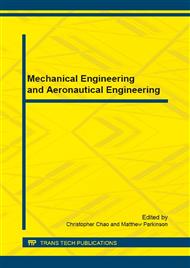p.55
p.61
p.66
p.73
p.78
p.83
p.90
p.95
p.103
Composite Patch Repair of Structural Member by Coupled FE-EFG Approach
Abstract:
This paper presents a simple and efficient coupled finite element-element free Galekrin (FE-EFG) approach to simulate three-dimensional composite patch repair problem. In coupled FE-EFG approach, extended element free Galerkin (XEFG) is used near the crack surface as it can accurately model the discontinuities while the rest of domain is approximated by standard finite element (FE) method. The transition between FE and XEFG was modelled by a ramp function. The geometric discontinuities like crack and material interface are modeled by adding enrichment functions in EFG displacement approximation through partition of unity (PU). The location of geometrical discontinuity is traced by vector level set method. A domain based J-integral approach is used for the evaluation of stress intensity factors.
Info:
Periodical:
Pages:
78-82
Citation:
Online since:
March 2016
Authors:
Price:
Сopyright:
© 2016 Trans Tech Publications Ltd. All Rights Reserved
Share:
Citation:


